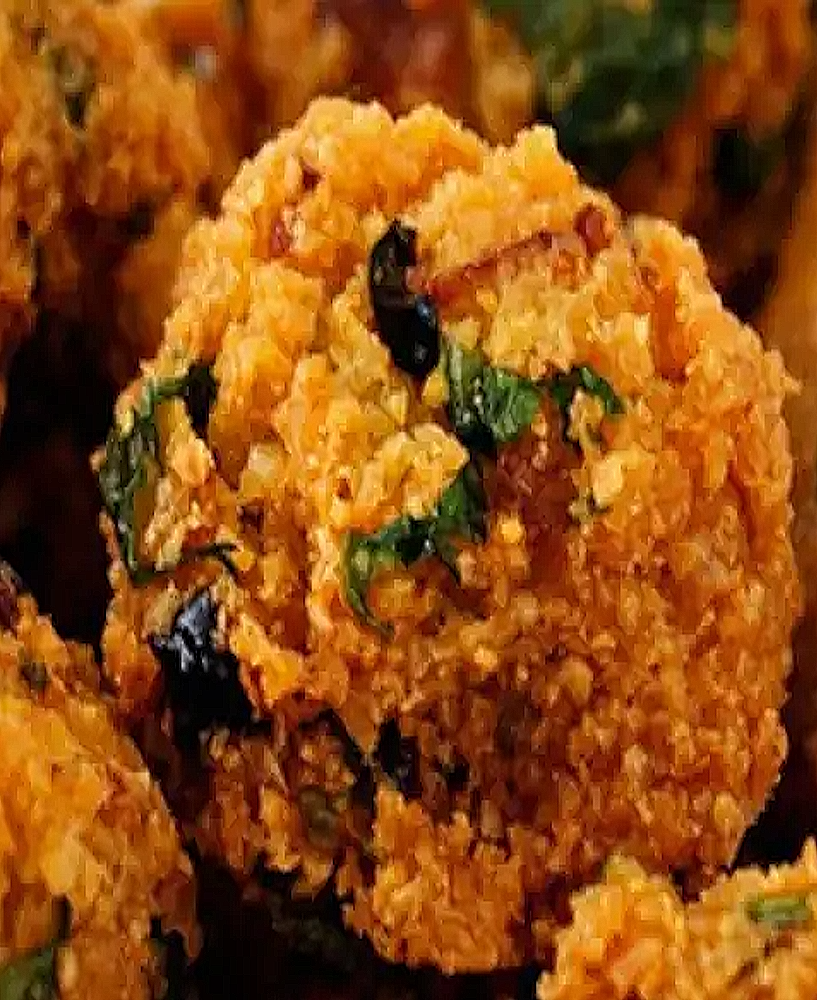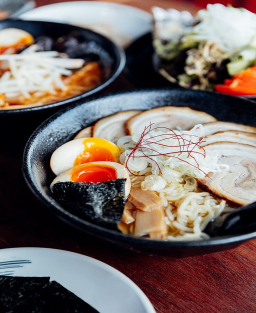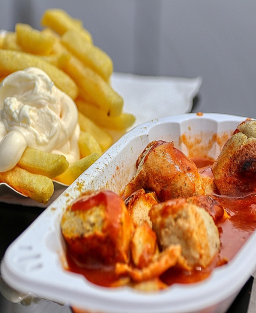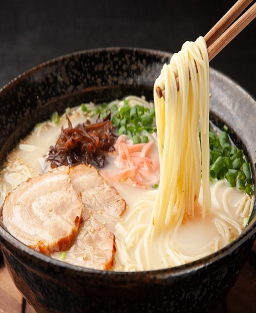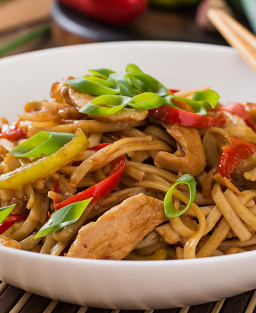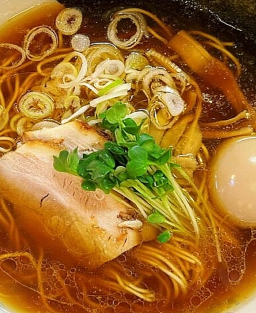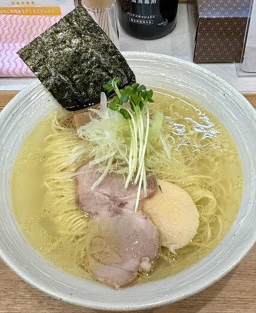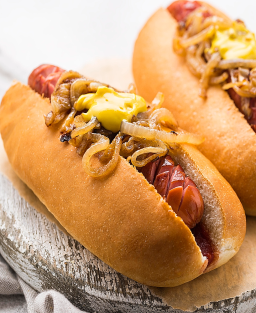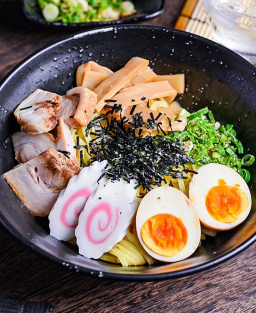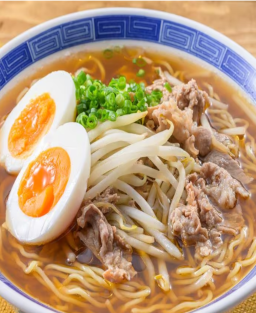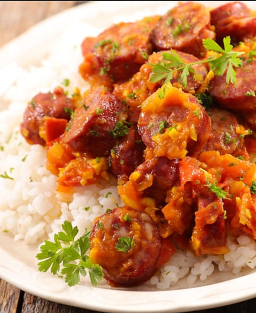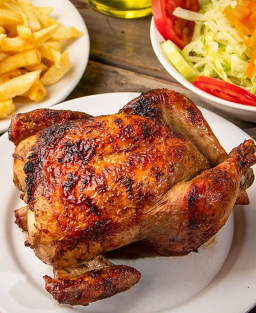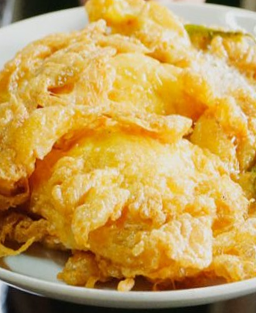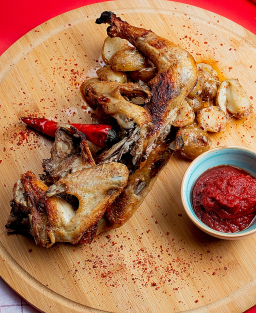- Out-of-Stock
Authentic Mauritian Bonbon Piment (Chili Fritter) Recipe with Delicious Local
Authentic Mauritian Bonbon Piment (Chili Fritter) Recipe with Delicious Local Variations
Bonbon Piment, the Star of Our Little Snacks
In the lively streets of Mauritius or the bustling markets of Réunion, one snack is impossible to miss: the bonbon piment — also known as gâteau piment. Behind this golden little fritter lies a distinctive taste: crispy on the outside, soft and spicy inside, just as it should be.
Depending on where you grew up or even the mood of the day, its name may change. A cute "ti bonbon piment" or "ti gato pima" might remind us of school days, when we’d buy one and tuck it inside buttered bread for a tasty "dipain gato pima."
In Réunion, it’s called "gâteau piment" or "ti gâteau piment." Some call it "gato pima zoli-zoli" referring to its pretty round shape, or "gato loulou" in family kitchens. When it’s especially full and round, it’s called "boule piment," and if it has lots of whole peas, it becomes "gato pistache."
Whatever the name—gato pima, gato pistache, ti pima frir, or ti bonbon piment—this little spicy fritter remains a beloved snack in Mauritius and Réunion, a classic at markets, picnics, or breakfast. Each bite tells a story of sharing, tradition, and sunshine.
Basic Ingredients
-
250 g pigeon peas (also called pois du cap, pois pigeon, gandules, toor dal) — a staple legume grown in tropical regions. In Mauritius, they are essential in dishes like gros pois curry, briani, fried noodles, or reinvented chili fritters. They can be fresh, dried, or frozen, offering a soft texture and mildly earthy, sweet flavor after cooking.
Do not confuse with:
-
Split peas (yellow or green, starchier, used in classic chili fritters)
-
Lentils (smaller, flat, cook faster)
-
Lima beans (butter beans), which are larger, kidney-shaped, and have a buttery, starchy taste and do not substitute for pigeon peas in traditional recipes.
-
2 medium onions, finely chopped
-
2 fresh green chilies, finely chopped (adjust to your heat tolerance)
-
2 garlic cloves, crushed
-
Small bunch of fresh coriander, finely chopped (optional)
-
½ teaspoon turmeric powder
-
1 teaspoon ground cumin (commonly used in Mauritius; some replace with mild curry powder)
-
Salt to taste
-
½ teaspoon baking soda (optional—for lighter batter)
-
Warm water (just enough to make a soft batter)
-
Neutral oil for frying (traditionally sunflower or peanut oil)
Local and Historical Variations
-
Adding flour: Some regions add 2-3 tablespoons of chickpea (gram) flour or wheat flour to bind the batter, especially if the peas are dry or the batter crumbly.
-
Alternative spices: Some families add ground fenugreek or red chili powder for a stronger flavor. African-influenced areas might use black cumin (nigella) or black pepper.
-
Additional aromatics: Fresh grated ginger for a sharper note; fresh curry leaves or mint to enhance the flavor.
-
Chilies: Sometimes “piment oiseaux” (bird’s eye chili) is added in moderation for subtle heat. To make a milder version, reduce or omit the green chili.
Detailed Preparation
-
Soaking:
Rinse pigeon peas well, then soak in warm water for at least 6 hours or overnight until very soft. -
Grinding:
Drain and grind or pass the peas through a food mill to a smooth but slightly coarse paste—not watery. -
Mixing ingredients:
In a large bowl, mix the pea paste with onions, chilies, garlic, coriander, turmeric, cumin (or your spice choices), salt, baking soda (if used), and any optional spices/aromatics. -
Hydrating:
Add warm water gradually to get a thick, pliable batter easy to shape. If too runny, add some flour (chickpea or wheat) per chosen variation. -
Resting:
Let the batter rest for 20-30 minutes to meld the flavors. -
Shaping:
Form small balls or patties about the size of a walnut. -
Frying:
Heat oil in a pan or fryer. When hot, fry the bonbon piments in small batches until golden and crispy. Drain on paper towels.
Tips for Authenticity
-
Always use good-quality pigeon peas soaked sufficiently.
-
Fry quickly to keep fritters crispy.
-
Balance the spices so the natural pea flavor shines through.
-
Serve hot as a snack, often with homemade chutney or a cup of tea.











